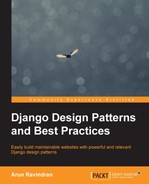All the code samples in this book have been written for Python 3.4. Except for very minor changes, they would work in Python 2.7 as well. The author believes that Python 3 has crossed the tipping point for being the preferred choice for new Django projects.
Python 2.7 development was supposed to end in 2015 but was extended for five more years through 2020. There will not be a Python 2.8. Soon all major Linux distributions would have completely switched to using Python 3 as a default. Many PaaS providers such as Heroku already support Python 3.4.
Most of the packages listed in the Python Wall of Superpowers have turned green (indicating that they have support for Python 3). Almost all the red ones have an actively developed Python 3 port.
Django has been supporting Python 3 since Version 1.5. In fact, the strategy was to rewrite the code in Python 3 and deal with Python 2 as a backward compatibility requirement. This is primarily implemented using utility functions from Six, a Python 2 and 3 compatibility library.
As you will soon see, Python 3 is a superior language in many ways due to numerous improvements primarily towards consistency. Yet, if you are building web applications with Django, the number of differences you might encounter while moving to Python 3 are quite trivial.
If you are stuck with a Python 2.7 environment, then the sample project can be easily backported. There is a custom script named backport3to2.py at the project root that can perform a one-way conversion to Python 2.x. Note that it is not general enough for using in other projects.
However, if you are interested in knowing why Python 3 is better, then read on.
